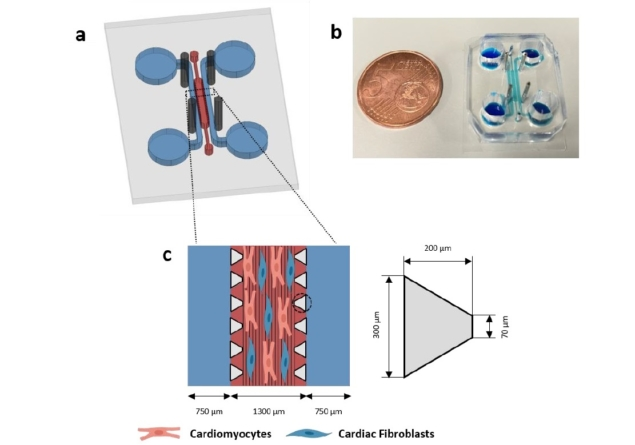Researchers from Spain have created a microfluidic platform that can generate highly anisotropic 2D cardiac tissue. The team used electrospinning to deposit nanofibrous scaffolds on thin coverslips. This makes the fibre architecture (orientation, composition, thickness and density) resemble the heart’s extracellular matrix and provides spatial cues to guide cardiac assembly in vitro.
After generating the tissue, they bonded the coverslips to a silicone microfluidic device to create a 1300 x 8800 x 150 μm cell culture chamber.
Source: https://iopscience.iop.org/article/10.1088/1758-5090/abff12

